Posts Tagged garden
Gardening Advice from a Landscape Maintenance Company
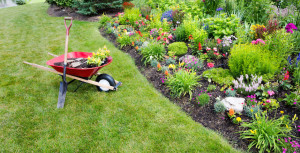 Most people expect three things from their landscape: for it to look good, for it to require little maintenance, and for that maintenance to be inexpensive.The reality is that to keep your garden looking green and healthy, you will have to invest a lot of time, money and effort. Serious gardening may not be easy if you have a busy life. However, with a little planning and the right advice, it is possible to reduce gardening costs while still having an aesthetically pleasing garden. In order to get the most out of your gardening time on the weekends, consider the following tips:
Most people expect three things from their landscape: for it to look good, for it to require little maintenance, and for that maintenance to be inexpensive.The reality is that to keep your garden looking green and healthy, you will have to invest a lot of time, money and effort. Serious gardening may not be easy if you have a busy life. However, with a little planning and the right advice, it is possible to reduce gardening costs while still having an aesthetically pleasing garden. In order to get the most out of your gardening time on the weekends, consider the following tips:
- Understand Your Garden
Before you decide to add anything new to your garden or to make any big changes, look at what is already there. Pay attention to the weather, as well as to the light and soil in your yard. Look at the types of plants that are thriving under the conditions present on your property. When you go shopping for new plants, look for ones that flourish under those same conditions. - Put in a Few Trees
Trees are an excellent addition to your property and can help to increase its value. Mature trees not only provide a degree of privacy for your home, they can provide protection for plants lower to the ground as well. Trees last for a long time and require relatively little maintenance. - Choose the Right Plants
If you are a busy person without much time for gardening, you may want to focus on low maintenance plants. It is important to remember that the meaning of a term like “low maintenance” can differ from person to person. Plants that are considered by others to need little maintenance may actually require more gardening time than you are able to invest. If you have limited time for gardening, consider hiring a professional to handle your landscape maintenance. With their help, you may be able to get plants that require more effort. - Take Out the Tough Weeds Prior to Planting
When you are putting in a new landscape, preparation makes all the difference. By carefully preparing the soil, you can substantially reduce the amount of time and effort that you spend gardening. Remove the top layer of sod in the location that you intend to use for your garden. Completely remove annual and perennial weeds from the area as well. Till the soil and let the sun dry out any remaining weeds. Give it a week before tilling again. - Choose Plants of the Right Size
Look at the tags on your plants to find out how large they will get. Avoid crowding your garden beds and pay attention to the plants’ growth tendencies rather than try to restrict them. - Pruning
Good gardening involves pruning your plants annually to maintain their health and to keep your garden looking neat.
Landscape and Garden Design Tips For New Homeowners
Landscape and garden design is top priority as you’re excited about your new home. You can’t wait to finish decorating and furnishing every space in your home, including your lawn and garden. However, when you first start considering what the perfect layout for your garden would be, the options and work involved can seem overwhelming. Fortunately, you can simplify the entire garden design process by understanding how it works. In order to get your landscape and garden design right, keep the following basic tips in mind:
Don’t Brainstorm Your Landscape and Garden Design Ideas in a Vacuum
One of the biggest mistakes you can make with garden design is to sit in an empty room and try to come up with ideas. Successfully designing a garden requires inspiration; for this, there is inspiration all around you. In particular, there are three sources that you should pull inspiration from:
Nature — Naturally beautiful landscapes allow you to see how garden life can flow on its own with the right setup
Professionals — Looking at beautifully laid out parks, checking out professionally landscaped homes, and consulting with a landscaper are all great sources for landscaping ideas
Your neighborhood — Walking around your area and adding features from your neighbors’ garden designs that you do like — and avoiding the features that you don’t like — can really help you develop your own design, especially since the homes in the area will have some similarities to your own
Think Function and Form for Your Design
You want to be able to enjoy your outdoor space as your own little garden oasis. For this, you need to consider both form and function (you can’t create a garden oasis feel without the right design, but you can’t enjoy your garden oasis if your design hasn’t left you with any room to relax in it).
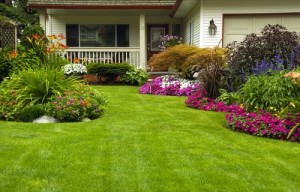
Create a Realistic Design Budget
Garden design budgets can vary drastically. If you approach your design haphazardly, you could find yourself turning your pockets inside out before the job is even half of the way done. On the other hand, you could end up missing on some outstanding garden design elements that you could easily afford if you approach the project cheaply with no real budget in mind. Avoid these types of issues by setting a realistic budget before you begin with your final plans. This way, you know what you can really afford to do. Also, because sudden expenses can occur, be sure to give your budget an extra 10%-20% emergency cushion.
Another issue to bear in mind is water savings and homeowners should set up a design that saves water and ultimately money. The state of California has laws in place in regards to water irrigation in order to protect and efficiently manage the county’s water supply.
Decide What You Can and Can’t Do On Your Own
Even if you have a green thumb, don’t simply assume that you can do it all. Installing certain fixtures, plants, etc into a garden the right way requires a team of professionals and the right equipment. Consult with a professional landscaper to discuss your options here.
Write Your Design Plans Down
Once you have all of your garden design plans in place, you need to make sure that you stick to them — and that you’re really going to like them. To this end, you should write everything down in two forms: prose and sketch. Writing everything you need down will keep your design plans in perspective with your budget and drawing a picture will give you a good depiction of how everything will actually look when you’re all done (the real thing doesn’t always match up with what’s in your head. If you can’t draw, then have a professional landscaper help you develop the image.
You’re Not Far From the Design of Your Dreams
Now that you know how to approach landscape and garden design, it’s time to get the process started. Reach out to us for a consultation as we’re here to help you get started.
Garden Design for Clay Soils
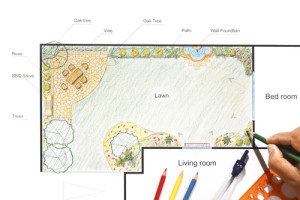 Clay soil is definitely an acquired taste for most gardeners, yet you might start swearing by clay soil once you hear some of the benefits listed below. First, though, what the heck is clay soil and how can it benefit your garden?
Clay soil is definitely an acquired taste for most gardeners, yet you might start swearing by clay soil once you hear some of the benefits listed below. First, though, what the heck is clay soil and how can it benefit your garden?
Clay Soil Vs. The Competition
Generally when you walk into a nursery, outdoors department or speak with a landscape maintenance company, you might be steered more towards silt soils or loam soils before clay. That’s because clay soil is composed of tiny plates or granules that can harden over time.
You’ve no doubt had the experience of plunking your shovel down into the ground, ready to get your garden going in the spring, and run up against clay. In spite of its hardness, though, clay soil is great for retaining moisture, nourishing your garden as well as retaining nutrients and fertilizers between individual clay particles.
Loam, relatedly, is a combination of clay, sand and silt and is very versatile, moldable and just easy for even inexperienced gardeners to work with.
Benefits of Clay
Part of the reason that loam soil is so moldable, to our main point, is that loam contains clay. The clay in the loam ensures that what you’re working with clumps into granules whereas the silt and clay components of loam help to retain moisture and nourish the plants in your garden.
Clay soil works wonderfully for annuals as well as perennial plants since the clay allows these plants to get a firm (and nourishing!) hold with their roots. The grip that perennials and annuals get with clay can withstand otherwise harsh humidity and temperature changes.
In short, clay’s fantastic as a garden design foundation since it provides a hearty root structure and allows plants to withstand harsh conditions. Moreover, you won’t need to water or fertilize as much with clay as with other soils. All good things.
Working with Clay Soil
Clay soil as a garden design foundation can accommodate a pretty wide range of shrubs, climbers, conifers and trees. Everything from popular conifers like ginkgo biloba and a deciduous evergreen like cotoneaster to rosa and fuchsia shrubs makes a great complement to clay soil.
To provide even more nutrients for these clay-compatible shrubs and conifers try adding a light mulch to your garden. Leafmold, composted bark and long manure work especially well with clay soil in terms of providing an easy-to-work-with mulch that does wonders for your plants.
Mulching Your Clay Foundation
When you actually get down to planting, mulching the plants up to three inches is a good idea for a few reasons.
Just a few inches down allows the right amount of moisture to hit your plants’ roots while tamping down weed growth and providing shielding from the elements.
One problem that people have with clay soil is that they sometimes overwater. Remember that clay soil retains water and moisture better than other garden foundations and, therefore, doesn’t need around-the-clock watering.
You’ll know that you’re doing too much watering when you notice a lot of the plants visibly retaining water and you notice globs of water on the clay surface the next day. These would both indicate that it’s time to cut back and let clay soil work its magic.
Creating the Perfect Garden
If you understand how clay’s small granules retain moisture and you know not to overwater, clay can offer a ton of benefits beyond more favored soil types.
You might consider planting eucalyptus trees, gorgeous flowering plants like bergenias and some of the conifers mentioned above for the perfect garden design. Contact Xeriscape today to get started.
Go Native, Save Water: Xeriscape Gardening
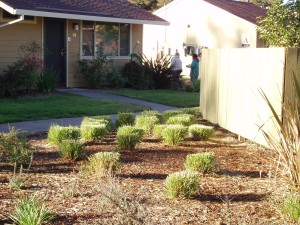 The information age has brought with it a flood a varying techniques in the fields of landscaping, gardening and ecological design. In keeping with the sustainable nature of the best of them, xeriscape gardening is defined by its optimal use of a minimal amount of water. This approach to gardening has been developed in the arid regions in the world, chiefly in the American mid-west, as a natural response to the climate. Xeriscape is most effective when the need for supplemental irrigation is eliminated and the design of the garden promotes symbiotic relationships that provide benefits. Environmental conservancy is xeriscape gardening’s top priority, but aesthetic design has received as much consideration. At its best, xeriscape becomes a melding of both utility and beauty.
The information age has brought with it a flood a varying techniques in the fields of landscaping, gardening and ecological design. In keeping with the sustainable nature of the best of them, xeriscape gardening is defined by its optimal use of a minimal amount of water. This approach to gardening has been developed in the arid regions in the world, chiefly in the American mid-west, as a natural response to the climate. Xeriscape is most effective when the need for supplemental irrigation is eliminated and the design of the garden promotes symbiotic relationships that provide benefits. Environmental conservancy is xeriscape gardening’s top priority, but aesthetic design has received as much consideration. At its best, xeriscape becomes a melding of both utility and beauty.
The Principles of Xeriscape
As conceived by Denver Water, xeriscape gardening’s most revered proponent, these seven guiding principles provide the foundation for all considerations within the field. Each principle holds an entire discipline within itself, which means that there is always more to learn and improve upon in this field.
- Planning and Design are the cornerstones of effective gardening, which requires careful attention to your specific environment.
- Soil Management is about knowing what nutrients your selected plants need and what nutrients are available in the soil. Composting is a great way to reinvigorate malnourished soil.
- Plant Selection is an integral part of xeriscape gardening. Thousands of species exist in arid conditions, each with benefits and beauty to offer.
- Turf Minimalism is crucial because the water needs of most grass lawns makes them impractical for dry climates.
- Diligent Irrigation may be the reason you’re interested in xeriscape gardening to begin with. Water is an invaluable resource and appropriate use of it is essential to environmental conservancy.
- Mulch can be composed of several materials such as leaves, wood chips, pine needles and bark. It is spread over the surface of the soil to help with water retention, fertility, prevention of erosion, and reduction of weed growth.
- Maintenance in the form of weed pulling, mulching, and general upkeep should be combined with constant observation to check if your garden layout is working to its full potential.
The Benefits of Xeriscape
- Reduced Water Consumption is both the key aspect of xeriscape gardening and a great benefit of it. It means using less water and making better use of it. Not only will this save you money, but you will be helping your community and environment as well. Re-appropriating rainwater can help you prevent evaporation and runoff, and your garden’s layout can be optimized for better use of it.
- Less Maintenance is required from a xeriscape garden. Much less fertilizer is used, which helps urban runoff pollution, lawn mowing becomes nigh unnecessary, and simple irrigation systems can handle all of your watering needs.
- Pest Control is an added benefit of a really well thought out garden layout. Certain xeriscape friendly plants ward off insects, while prickly cacti do the same for intrusive mammals. Plant selection also enables you to create a sanctuary for desirable birds and insects.
- Property Values Rise when you drought-proof the terrain around your home. Likewise, the design opportunities available to xeriscape can make for some exquisite gardens.
There are an abundance of tips and tricks available for do-it-yourself xeriscape gardening, but expert consideration reaps the true benefits of the art form. Xeriscape specialists develop an uncanny ability to read an environment and discern its possibilities. With a little help, and dedication to the sustainability principles of xeriscape you could be looking at a lower water and power bill, a productive and efficient garden, and a beautiful area in which to relax.
Front Yard Flower Bed Ideas – DK Landscaping
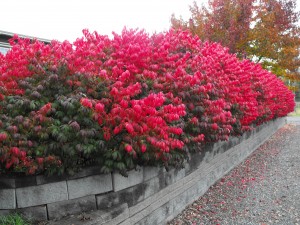 Want to make your home look calm, inviting, and happy? Add flower beds to your property for constant color. Use the beds to delineate property or break up bland expanses of lawn grass and dirt. Finding flower bed ideas is simple, but you should be sure of what you need and why. There are so many possible flower bed ideas that you can get easily bogged down in details if you start to look for designs without taking issues like drought and level of care into consideration. Pinpoint non-negotiable issues like those first to make designing your front yard a lot more efficient.
Want to make your home look calm, inviting, and happy? Add flower beds to your property for constant color. Use the beds to delineate property or break up bland expanses of lawn grass and dirt. Finding flower bed ideas is simple, but you should be sure of what you need and why. There are so many possible flower bed ideas that you can get easily bogged down in details if you start to look for designs without taking issues like drought and level of care into consideration. Pinpoint non-negotiable issues like those first to make designing your front yard a lot more efficient.
Drought-Proof Flower Bed Ideas
Drought is probably going to be one of your main considerations when looking at flower bed ideas. Many areas of the country are experiencing water shortages, and anything you plant has to be able to deal with a lack of abundant water. That doesn’t mean you have to plant cacti — just look for cultivars of flowers that have been bred to be less water-needy. Native flowers are always a wonderful choice in this case as they are already somewhat adapted to their region’s fluctuating water supplies. Plant breeders have been working on drought- and disease-resistant cultivars of all sorts of plants for years, and it’s become easier to find these in garden centers and from landscaping companies when looking at flower bed ideas.
Easy Care Flower Bed Ideas
Ease of care is another big consideration for flower bed ideas. Even if you have a landscaping company taking care of most of your garden, you’ll still have to do some minor care yourself. If you don’t feel up to that, you’ll want flower varieties that can handle benign neglect. Again, native flowers tend to be a little better for this, though there are easy-care species from all over the country if you’d like more variety for your flower bed ideas.
Location Ideas For Your Flower Bed
Now take a look at location to further refine your flower bed ideas. Flower beds that will be near the street need to be able to handle road salt spray, for example, if your area tends to have occasional snowfall in spring or fall. That’s not so much of a problem with annuals, as you’d be removing them anyway, but if can be for perennial or biennial flowers.
Flower bed ideas for spaces near fences can have species of varying heights, so those plants nearer the fence should be taller. The shorter flowers near the edge of the bed may need to be shade-tolerant if the bed is positioned where the fence or taller plants might block a lot of the sunlight.
Reduce Insects
Flowers planted next to the house need to be pest-resistant if possible. While it is impossible to guarantee that a flower will never attract a bug, if you have flowers that tend to attract pests, those pests could get into your house. Ask your garden center or landscaping company to show you flowers that have a reputation for repelling insects, too, such as marigolds, petunias, and nasturtiums. As you come up with ideas for other areas of your yard, you can work a few of these plants in so that you can reduce the number of pests you have to deal with overall. Start talking to landscape design companies about flower bed ideas and species that fit what you need for your yard’s environment, and you’ll have a beautiful yard in no time.
Winter’s For The Birds
While your garden is dormant, it can be just as entertaining and rewarding to feed our feathered friends in winter. Feeding the birds in winter is a kindness not only to them, but also to yourself. After all, there’s nothing quite like watching all of the birds happily feeding each morning while you’re sipping on a hot cup of coffee.
Winter is a particularly a difficult season for birds who stick around colder climates, and is at that time of year when their usual foods are in short supply. Birds use a lot of energy in the winter months to keep themselves warm, they need extra stamina. Winter birds are around, but in order to entice them into our yards, we must provide a little nosh – a little seed, perhaps some suet.
Enrich the Birds’ Diet
Birds need extra fat and protein in the wintertime. Fatty treats like oil sunflower seeds, peanuts, and suet are a tasty way to provide these nutrients. (Change the menu in favor of lighter fare when the spring thaw comes along.)
Hang a Covered Bird Feeder
Use a bird feeder equipped with a roof, to shelter your guests from all but the harshest weather that Mother Nature has in store. Fill it up regularly and remember to remove any seeds that get moldy from wintry damp.
Hang Feeders in Cat-Safe Locations
Place bird feeders in locations that do not also offer hiding places for sneak-attacks by cats and other predators. Think of placing the feeders ten to twelve feet from shrubs or brush piles. This gives the birds some time to react.
Offer Birds both Food and Drink
Birds can become dehydrated in winter even if surrounded by ice and snow. Putting out a pan of water near the feeder on warmer days is a terrific idea.
Save Money and Stock Up on Seed
Bird feeding veterans say it is best to stock up on birdseed in the Fall when many lawn and garden centers are discounting it to make way for winter merchandise. Stored properly, (in cool dry places) seed can easily last for months, particularly seed mixes and sunflower seeds.
Leaving berriesand other fruit on your native trees and bushes. Birds ranging from robins, cardinals, juncos, waxwings and mockingbirds to wild turkey and grouse will feast on these fruits throughout the cold months. And if you’ve been smart enough to leave your fallen leaves on the ground since autumn, the decaying leaf litter will provide a feast of insects, seeds, nuts and other treats for your backyard birds.
Why Choose a Professional Landscaper
Now that summer is in full swing, you might be thinking about hiring a professional landscaper to maintain your lawn. Everyone loves having a manicured lawn and weed-free garden full of blooming plants and pretty flowers, but let’s face it! Achieving that look often means spending hours into your yard and garden maintenance. And others, may just lack that green thumb needed to make their gardens thrive. That’s where the professionals of a landscape maintenance company come in. A landscape maintenance service takes care of the lawn, the gardens, the trees, the fountains and patios. If it’s in your yard, there’s a good chance a maintenance service company can build it, mow it, rake it and help it grow.
DK Landscaping provides you some of the few benefits of hiring a landscape maintenance service:
- A landscape maintenance service can save you time! By using commercial-grade equipment, it can dramatically reduce the time it takes to mow and perform other maintenance tasks. Most landscape companies will have multiple employees working on your yard at the same time, allowing them to tackle several projects at once and complete them in a fraction of the time.
- A landscape maintenance service employs professionals who know not only how to mow your lawn and weed your garden, but to also make sure your plants are healthy. They can create sustainable landscapes that not only enhance the beauty of your home but are friendly to the surrounding environment.
- A landscape maintenance service will ensure that your yard will be maintained regularly whether you are home or not. Homeowners tend to overlook their lawn and garden especially in the summer months, in favor of recreation and leisure activities.
- Many landscapers go beyond mowing grass and taking care of gardens. Some of these services include pool cleaning, building decks, installing pavers, patios, mulching, tree pruning/removal and building home irrigation systems.
- A landscape maintenance service will save a homeowner the expense of purchasing the various tools and equipment necessary for lawn and garden maintenance, tools and equipment that include lawnmowers, weeders, edgers, fertilizer, grass seed, leaf blowers, and shovels.
- And last, but not least, if you are a new homeowner and you’re just getting started, a landscape maintenance company will help you design the yard of your dreams.
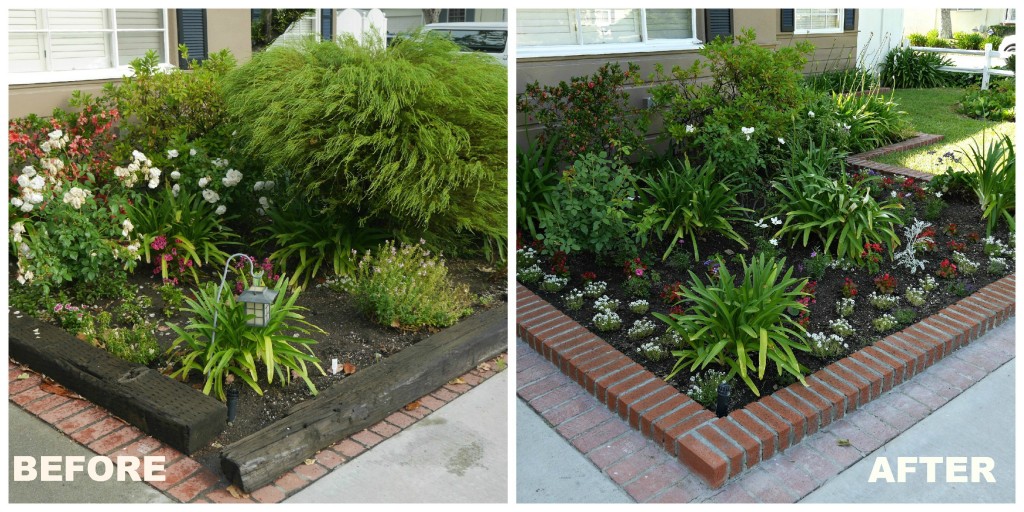
Choosing the right Landscape Maintenance Service
Get references! Don’t waste time looking through the yellow pages, radio/TV ads, or mailer discounts when your best source is your neighbors and/or friends. Ask them how much they pay, what kind of jobs the service handles and if they’re satisfied with the results. If you don’t have neighbors that use professionals, you can check with local nurseries and garden supply stores. These businesses often keep lists of professional landscape maintenance service contractors.
When interviewing landscape maintenance services, ask questions! Check out the company’s qualifications and references. Reputable landscape companies are proud of the work they perform and will be happy to show you.
Finally, know the work you want to have done and know what your budget is. This will allow the company to determine its best price quote. It’s also a good idea to get quotes from several companies if possible.
Hiring a landscape maintenance service will cost you money, but the convenience and curb appeal will enhance not only your yard but your quality of life and give you peace of mind that it will get done right!






